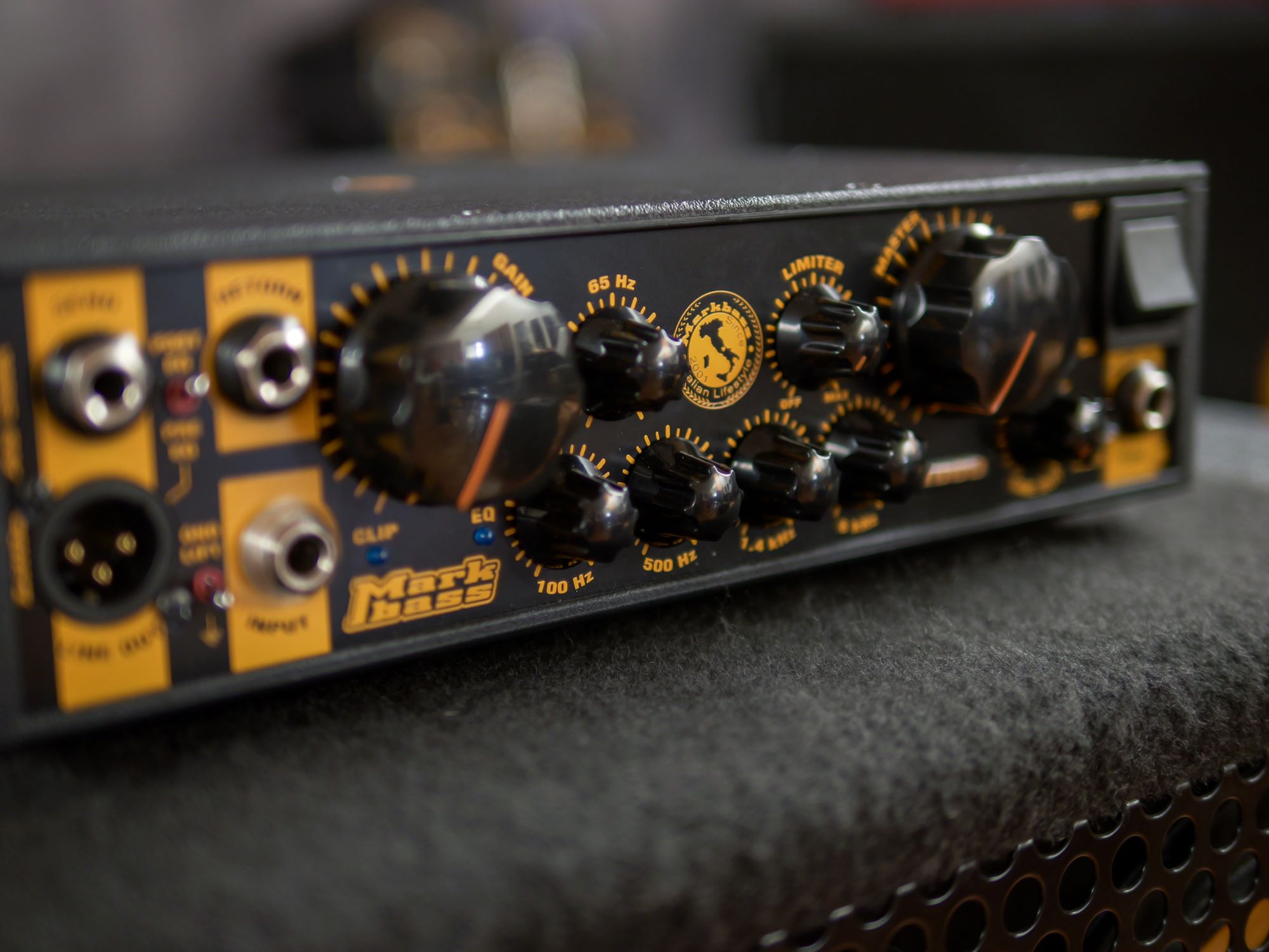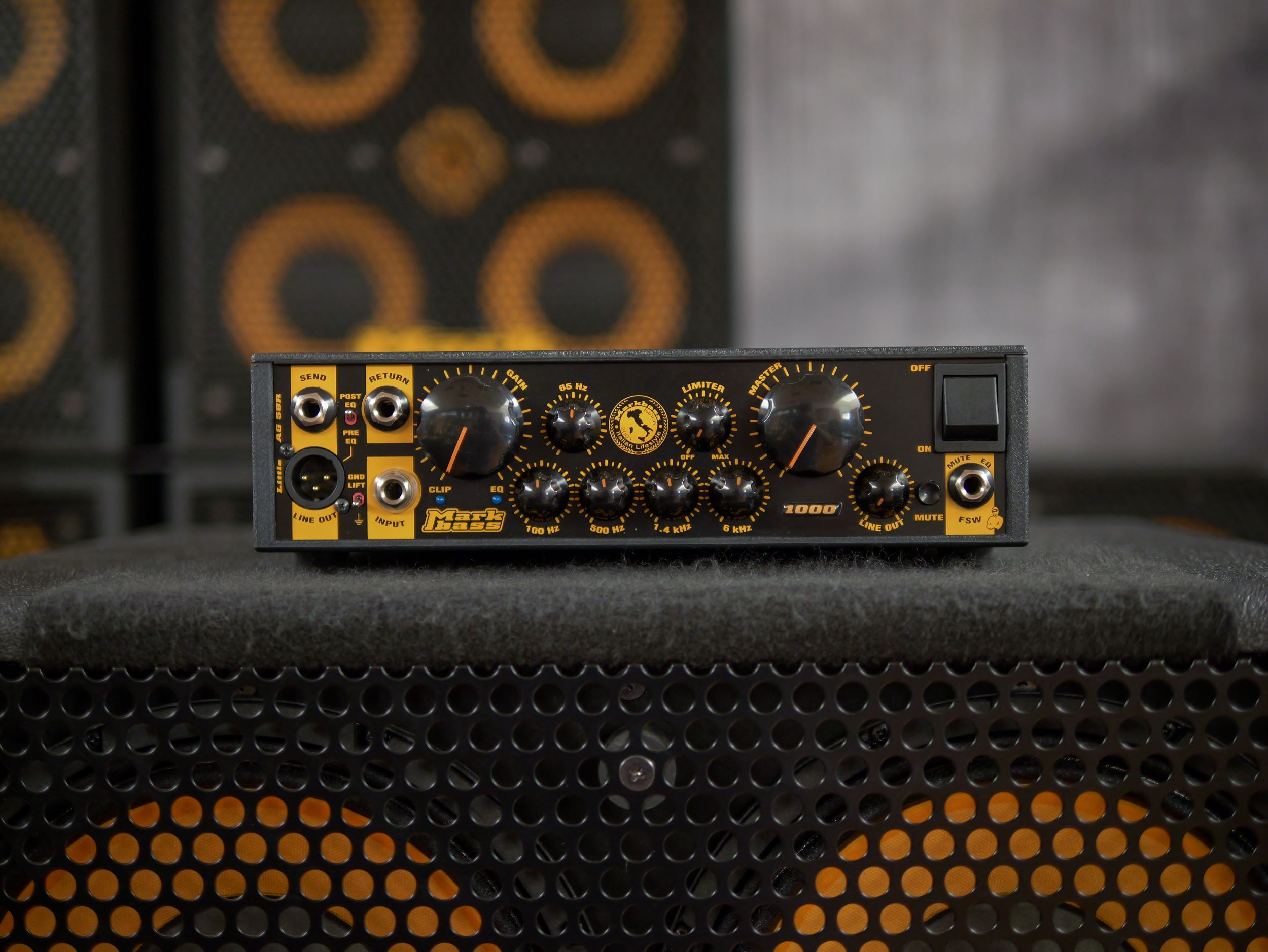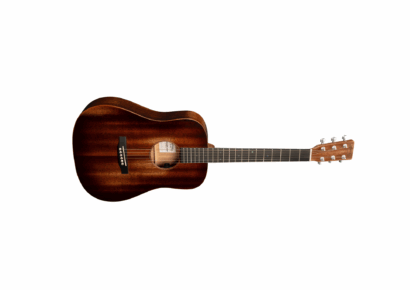At 2.17kg with 1000W on tap, the Markbass Little AG 58R proves you can have portability, power and precise tonal control in one compact package.
Gear heads, get ready. Markbass has teamed up once again with the legendary Andrew Gouché for the next chapter in their signature series. Known as the ‘Godfather of Gospel Bass, Gouché has laid down iconic grooves for Prince, Chaka Khan, and countless greats.
Read all the latest reviews here.
The Little AG 58R is the newest evolution of his signature head, part of Markbass’s modern 58R series (their lighter, eco-friendly redesign). Gouché worked closely with Markbass to nail his signature sound, and they succeeded. But can it deliver your unique sound? Absolutely yes.
There’s nothing little about the Markbass Little AG 58R, other than its size. My first impression when picking up the box was just how light it felt, weighing in at just 2.17kg. I could easily carry the compact head in one hand, which I really appreciate when hauling gear. Naturally, I became curious about how this bass head would contend in a full band setup. Could something this portable really deliver the goods?
So, I got my band together to put it through its paces. After taking this baby out for a couple of test drives and dialling in my preferred settings for our indie rock sound, I was impressed by how the clarity and punch cut through the mix effortlessly.
Little AG 58R
Right out of the box, the Little AG 58R makes a statement. Featuring all the connections and controls on the front panel, this design immediately sets it apart from traditional bass heads. All wrapped in a sleek black and yellow bumblebee aesthetic. At 27.6 x 25.6 x 8.3 cm, it slides nicely into your gig bag alongside pedals and cables.
What really grabbed my attention were the knobs, which are all programmable by Hz, giving it a very scientific feel and serious nerd-out potential. This approach rewards players who know their frequencies. To put this in context, most bass heads use broad, musical labels like ‘Bass,’ ‘Mid,’ and ‘Treble’ that are easy to understand and very plug-and-play.
But the Little AG 58R gives you five specific Hz control points: 65Hz (sub-bass), 100Hz (lows), 500Hz (punch and definition), 1.4kHz (attack and clarity), and 6kHz for those brighter tones. This level of control meant I could nail that sharp tweed sound I’m always chasing on flatwound strings. The Markbass Little AG sounds warm and musical without being muddy. Each note has definition and presence. I could clearly hear what I was playing rather than just feeling low-end rumble.
The gain and master controls deserve special mention. They’re generously sized dials that make balancing a fuzzy tube-style drive with your master volume an absolute breeze. You’re not likely to accidentally bump your EQ settings mid-set, which is exactly the kind of thoughtful design that gigging musicians appreciate. There’s even a clip light (doubt you’d ever hit it with this much headroom, but convenient insurance if your input runs too hot).

If it’s power you’re looking for, the 1000W delivers more than enough headroom for bigger stages. The extra wattage means less chance of distortion at higher volumes and noticeably better clarity across different bass styles. It was just as easily adaptable to our smaller rehearsal space, and I found it cut through our full band sound effortlessly. The solid-state design runs incredibly cool and quiet throughout long sessions. For the amount of control you’re getting, it’s an impressively tidy package.
The limiter control is where you really shape the character of your overall sound. Max it out and you get that modern, tight amp response – everything controlled and pristine. Leave it at zero and you’re letting that classic thuddy crunch colour the notes. The huge range in between lets you find your own balance, meaning I could set it and forget it rather than constantly tweaking between songs.
The mute switch sits conveniently on the front panel and can be triggered via the optional dual footswitch (which also controls your EQ on/off). Nice touch: a little ring light flashes around the input to guide you in the dark or show if you’re already connected – small details that make a real difference at 2am load-out.
The send options are a welcome standard. You can pass your signal pre- or post-EQ with a small toggle switch, sending via XLR and 1/4-inch simultaneously, a nice touch for sound engineers and shoegazers. The independent line out volume control means you’re not fighting with the house sound, and everything just works.
I even tried running an alternate EQ pedal (Fishman Platinum Pro EQ) through the effects loop to compare the range and add extra control across the frequency spectrum. It’s a bit overkill, honestly, but the Little AG handled the added compressor and boost with zero issues. A testament to how well this amp handles complex signal chains.
This isn’t a one-trick pony. It’s a genuinely versatile tool that works for bedroom players, weekend warriors, and touring pros. Whether you’re playing small venues or larger stages, the Little AG 58R has the headroom and tonal flexibility to deliver.
The standout feature? That front-panel design with surgical Hz-based EQ. Having tactile controls at your fingertips fundamentally changes how you interact with your amp, especially live. If you’re serious about your bass tone and want an amp that flexes with you, the Markbass Little AG 58R deserves your attention.
For local enquiries, head here.

